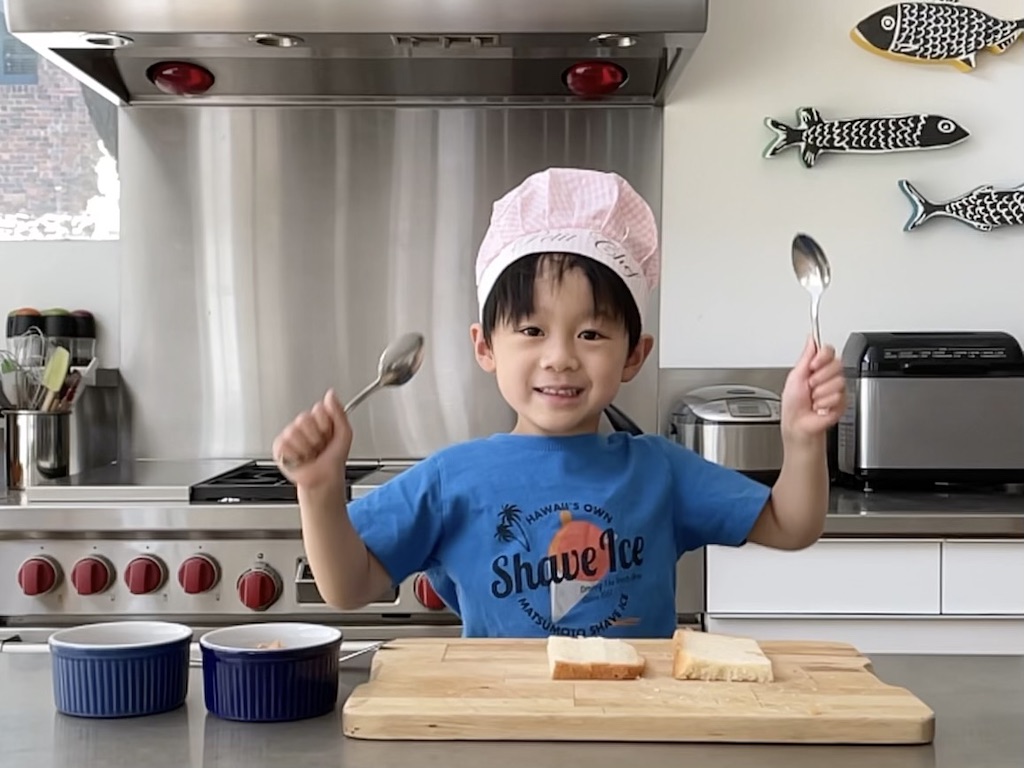Camp Grandma #5: A Quick Way to Visit Family History
A great way to give kids a sense of family history is to let them root out that history for themselves. So, at Camp Grandma, we are being historians, interviewing family members on video.
Preparation for a Family History Interview
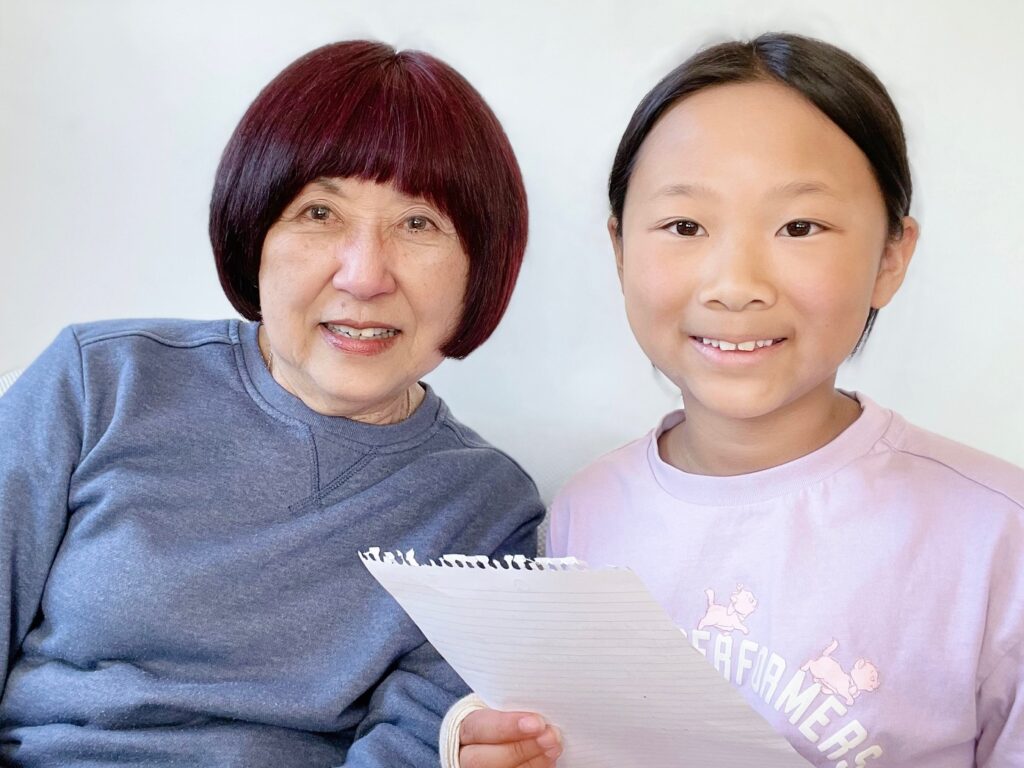
Work with the child to determine who they will interview. Have the child prepare 10 questions. No question is too silly or not worth the interviewee’s time.
For a young child like N, who just turned seven, help them to write down their questions. And have them practice reading the questions so they are primed and ready.
Share the questions with the interviewee in advance. You’re likely to get more cogent, meaningful answers if the person being interviewed is prepared.
Family History Questions
Of 10 questions, pick three to answer. Here are some of the questions the kids had:
N’s questions included:
- What’s your favorite food?
- How good are you at skiing?
- How many children are in your family?
Miss T’s questions included:
- What was your mom’s last job?
- When did you marry grandpa?
- What is your favorite hobby?
Family History Answers
The person being interviewed can direct the answers. For example, grandpa, who is not a skier, turned the skiing question towards the sports he played in Hawaii, such as basketball, long-distance running, and body surfing.
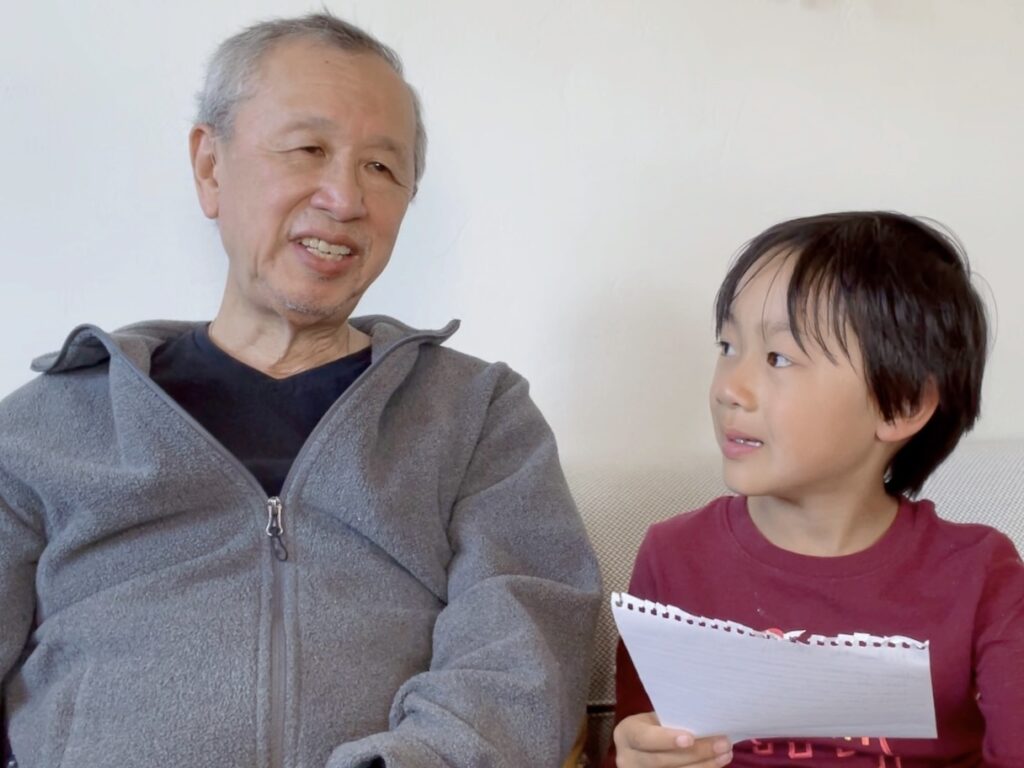
When asked about my mom’s last job, I focused not only on her last job, but on the many factory jobs she held, her remarkable skills, and her admirable work ethic. So I answered the question and shared my mom’s values at the same time.
The interviews should net out at about 15 minutes. It’s not meant to tell a life story, but to capture the personality of the interviewee on tape, for posterity.
The “Studio” Set-up
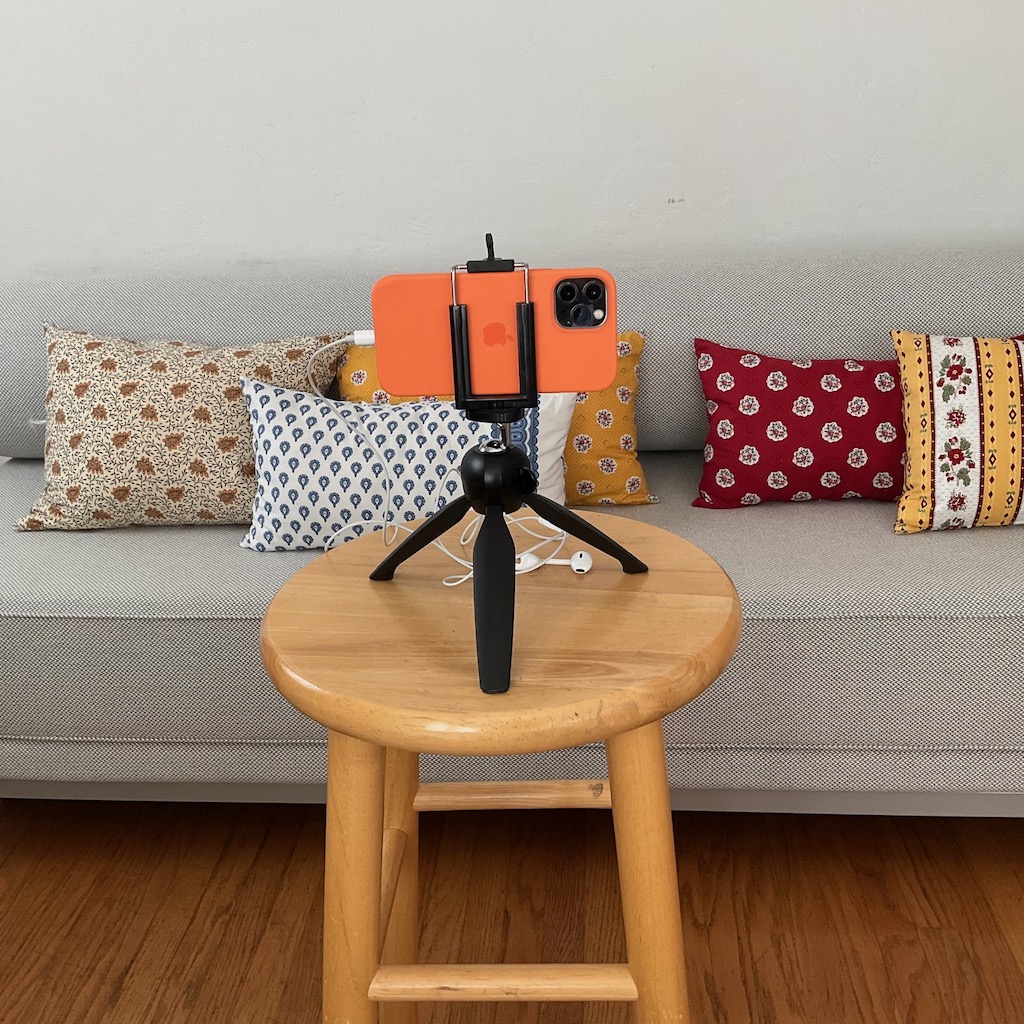
Find a quiet room. Put two comfortable chairs on the set or sit on a sofa. Ideally, the room should be clear of clutter so the video will focus on the people. And, it’s best if the room is brightly lit with natural light.
Another great video activity for kids: be a pretend TV cooking star.
However, don’t worry about the production values. Just do the best you can.
Set your phone camera on a tripod. I used my wired iPhone earbuds to turn the video recording off and on remotely.
Here’s a sample to give you an idea of a professionally produced video with kids.
Set up the camera and test it to see how your setup looks before the child is involved. This way, there’s no downtime for the child.
The Video Script
The child and interviewee should be sitting in place when the camera begins recording. The child should introduce themself, stating their name, age, date of the interview, and name the person being interviewed, as well as that person’s relationship to the child.
Edit the Interview
The total interview should be no more than 10 or 15 minutes. If there are any odd pauses or a restart, you can edit these bits out.
Storage
Store the interview in the cloud and on a memory stick as well.
Presentation
Debut the video for the whole family by showing it on your TV screen. We will be saving our videos for our Camp Grandma summer party.
Make a Family Tree
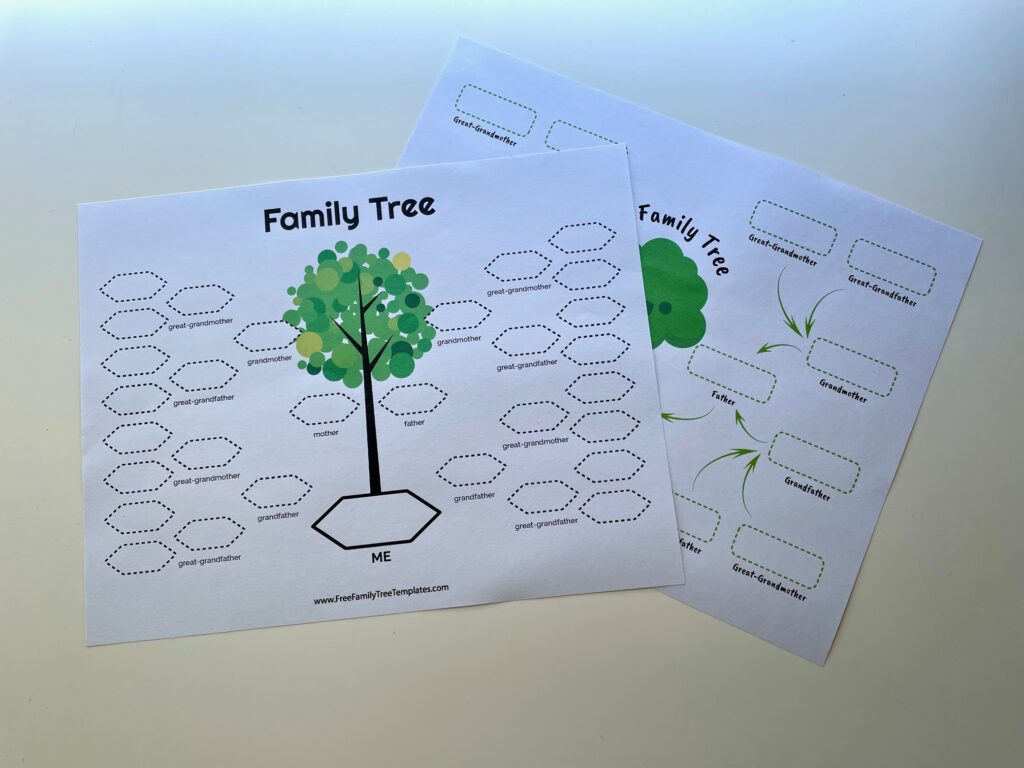
There are many sites with free family tree templates for kids. I used this simple one from Family Tree Templates. It’s just a straightforward connection to parents, grandparents, and great-grandparents. Miss T’s will take the family tree one generation further.
While it’s nice to have siblings, uncles, aunts, and cousins on your family tree, the diagrams can get quite bewildering for a child.
More Family History
I’ve become much more interested in my own family’s history after a vacation to Japan in May, where I met long-lost relatives and laid flowers at ancient family gravesites. In that post, I included some simple, actionable ways to preserve your ancestry information.
Here are more ideas to enhance your family history activities:
- Make a small album of photos so the child can see faces, as well as names, connected to their family tree.
- Encourage the child to do video interviews of other relatives for a bigger family picture.
- Write your own definitive autobiography for the grandchildren.
- Consider working with a program like StoryWorth. You’ll be emailed a question a week to inspire you to write. Those responses are then collected and compiled into a keepsake book.
- If older children express interest in family history, encourage them to go further by researching historical periods that affected their family. For example, our grandchildren’s grand uncle was killed in the Vietnam War. Their great-grandparents were married during World War II in a very small ceremony because people of Japanese ancestry–even Japanese Americans–couldn’t congregate. Kids can learn more about the historical periods that their family members lived through.
Sign Up!
Don’t forget to sign up for my email newsletter. Every Wednesday, I’ll give you a new idea for an activity or insight to nurture the little ones in your life.
